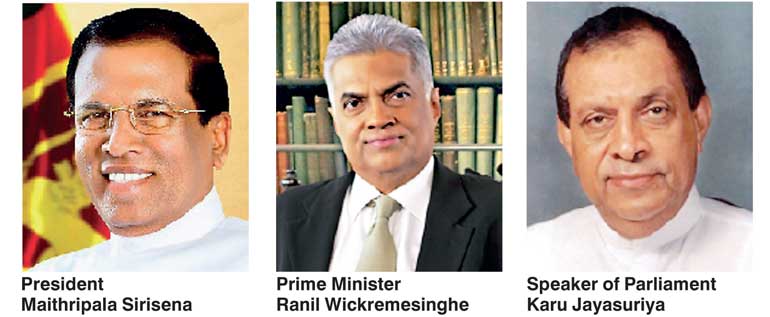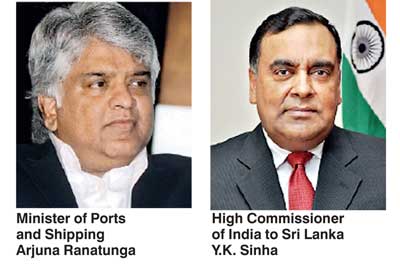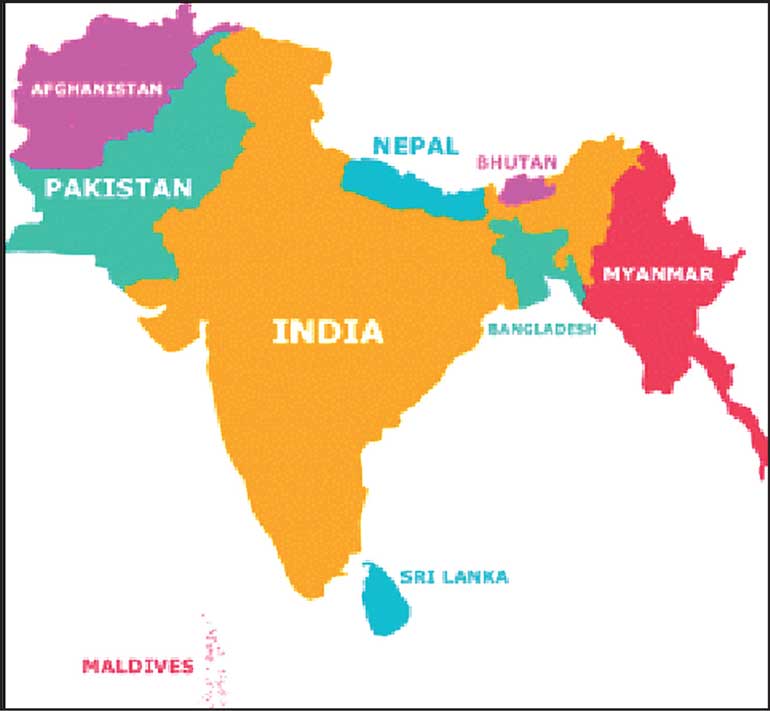Friday Jan 10, 2025
Friday Jan 10, 2025
Wednesday, 3 August 2016 00:02 - - {{hitsCtrl.values.hits}}


South Asia is interestingly getting international attention as a region that is poised to keep the global economic growth to sustain the momentum and help stabilise the current turmoil. The region is estimated to have GDP of over 2.6 trillion dollars and a population of over 1.7 billion with an expanding middle class consumption and manufacturing.
Driven by a strong expansion in India, coupled with favourable oil prices, economic growth in South Asia is expected to accelerate over the next decade. The region is among the greatest global beneficiaries from cheap oil, as all countries in it are net oil importers. In the last quarter of 2014 South Asia was already the fastest-growing region in the world, a recent World Bank report said.
The Republic of India is considered as one of the possible emerging superpowers of the world. This potential is attributed to several indicators, the primary ones being its demographic trends and a rapidly expanding economy and by GDP India became world’s fastest growing economy in 2015 with 7.3% GDP rate and further increasing to 7.9% in the first half of 2016. The country has to overcome many economic, social, and political problems as it moves forward with number of reform agendas under new government.
Prime Minister Narendra Modi rolled out a red carpet to industrialists, both domestic and international, inviting them to make India a manufacturing hub that will help boost jobs and growth. Introduction of ‘Make in India’ and this whole debate and drama over Land Acquisition is an indication that India is at the beginning of creating a new horizon of industrialisation.
‘Make in India’ initiative will open up many opportunities in shipping sector
The emerging situation will demand huge requirement of dredgers and harbour crafts to improve infrastructure in India alone. Apart from this, the experts say, the country needs more connectivity, ships and ports to handle containers, liquid and gas cargo. The oil exploration will move to deep water and the requirement for offshore support service will boost shipbuilding in the coming years.
The India led expansion will be complementary to states around it, particularly Sri Lanka as it is located at a strategic sea route connecting the east west shipping lane and is the number one transshipment centre in South Asia, many analysts believe Sri Lanka can be the Hong Kong to India as it is well poised to service the maritime needs of the region and will be an ideal location to be the regional logistics hub beyond its current status of the transshipment hub as it offers efficient and cost effective services with a highly skilled workforce that can adapt very fast.
Colombo Interna-tional Maritime Conference – CIMC, which was launched in 2015 with the support of the new Government, will be the premier maritime conference in South Asia as the island is an ideal and a central location in the Indian subcontinent to have MICE tourism as Singapore is for East Asia.

The South Asia Maritime Forum will be the launch pad of the 2nd Colombo International Maritime Conference which will start on 21 September at Galadari Hotel, the day that the President is to declare open Sri Lanka Maritime Week and the CIMC to be declared opened by Prime Minister Ranil Wickremesinghe on 22 September.
The South Asia Maritime forum will have speakers from India and other regional countries and is expected to be inaugurated by High Commissioner of India to Sri Lanka Y.K. Sinha, who had strongly supported the first CIMC in 2015. The Chairman of the CIMC is Minister of Ports and Shipping Arjuna Ranatunga and the patron is Speaker of Parliament Karu Jayasuriya.
The conference bookings are now open and can be reached at www.cimc.lk.